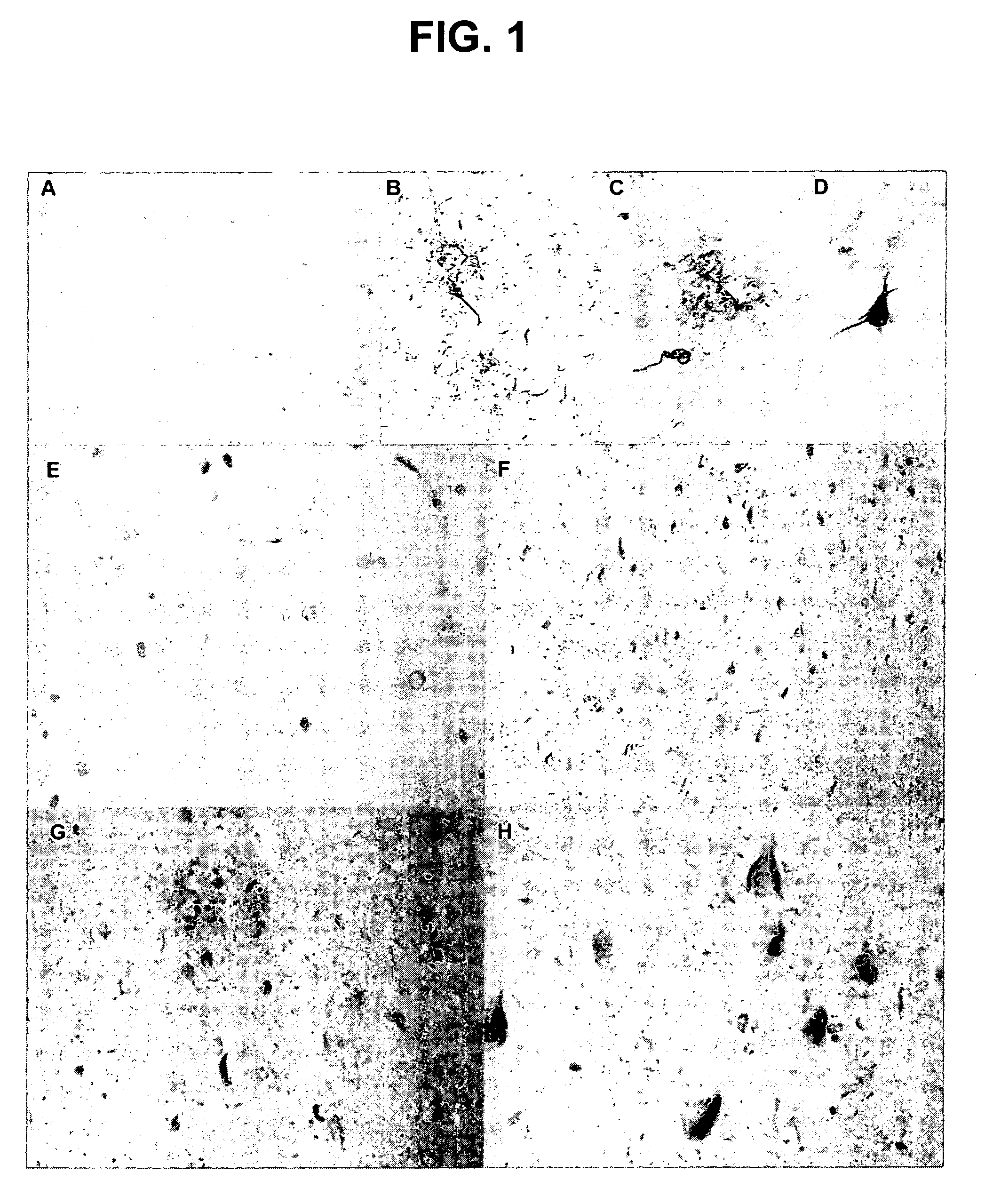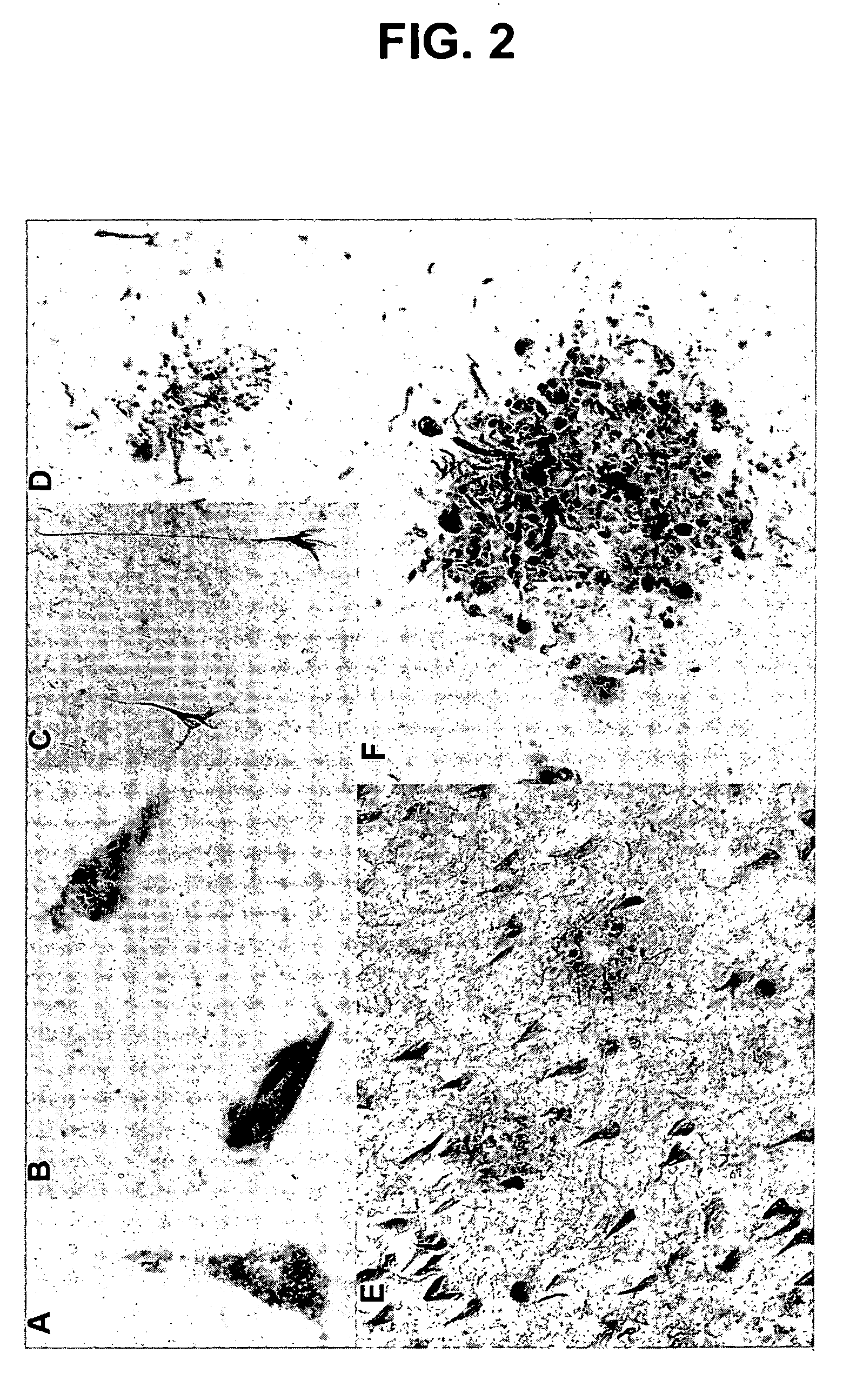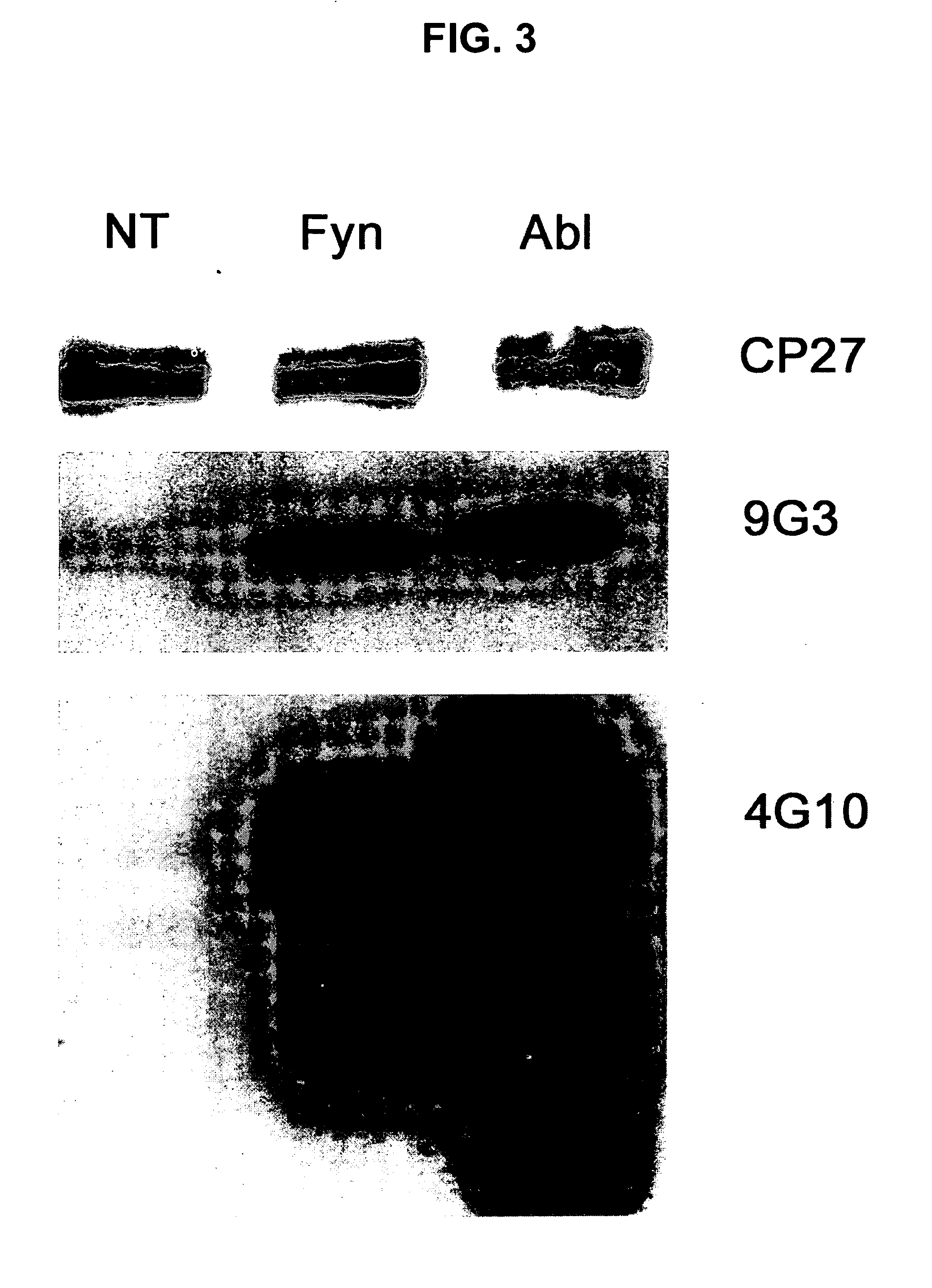Phosphorylation of tau by abl
a phosphorylation and tauopathy technology, applied in the field of diagnosis and treatment of tauopathy, can solve the problem that gleevec has not been evaluated for its effect on tau phosphorylation, and achieve the effect of inhibiting the development of tauopathy
- Summary
- Abstract
- Description
- Claims
- Application Information
AI Technical Summary
Benefits of technology
Problems solved by technology
Method used
Image
Examples
example 1
Phosphorylation of Tau by Abl and its Relationship to Alzheimer's Disease and Other Tauopathies
[0109] The discovery of active cell division mechanisms in neurons of patients with tauopathies such as Alzheimer's disease is almost 10 years old, and numerous papers have established that some aspects of cell division are indeed turned on in neurons that undergo degeneration in this disease. This finding was originally very controversial, because it was very well established that differentiated neurons in the adult brain do not undergo cell division. There is evidently a very strong mechanism preventing cell division: tumors never arise from differentiated neurons: neuroblastoma is completely unknown in adults. On the other hand, evidence that cell division mechanisms were activated in neurons of patients with Alzheimer's disease was very strong, and recent reports also suggest activation of the cell cycle in neurons surrounding strokes. This left two compelling questions: [0110] 1. Wha...
example 2
Further Studies of the Phosphorylation of Tau by Abl
[0119] Western blots and ELISA were utilized to evaluate abl2 (Arg) phosphorylation of tau at tyrosine-394 (Y394) and tyrosine 310 (Y310). Cells expressing the Y-to-F mutants described in Example 1 were co-transfected with abl2 and lysates were subjected to western blots and ELISA. FIG. 5A shows the results of staining those lysates with anti-phosphotyrosine (anti-pY), anti-Tau, and anti-abl2 (anti-Arg). Abl2 strongly phosphorylates Y394, with lower levels of phosphorylation at Y197 and Y310. When long (4R) and short (3R) isoforms of the mutant tau SEQ ID Nos 2 and 1, respectively) were cotransfected with abl2 (arg), Y394 was the predominant site of abl2 phosphorylation (FIG. 5B). Sandwich ELISA confirms western blotting results indicating Y394 as the major phosphorylation site for both the longest (FIG. 5C) and shortest (FIG. 5D) isoforms of tau.
[0120] A monoclonal antibody (YP21) was developed that specifically recognizes tau p...
PUM
| Property | Measurement | Unit |
|---|---|---|
| power | aaaaa | aaaaa |
| electrophoresis | aaaaa | aaaaa |
| secondary structure | aaaaa | aaaaa |
Abstract
Description
Claims
Application Information
 Login to View More
Login to View More - R&D
- Intellectual Property
- Life Sciences
- Materials
- Tech Scout
- Unparalleled Data Quality
- Higher Quality Content
- 60% Fewer Hallucinations
Browse by: Latest US Patents, China's latest patents, Technical Efficacy Thesaurus, Application Domain, Technology Topic, Popular Technical Reports.
© 2025 PatSnap. All rights reserved.Legal|Privacy policy|Modern Slavery Act Transparency Statement|Sitemap|About US| Contact US: help@patsnap.com



